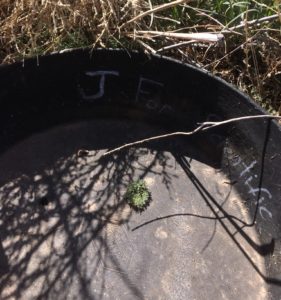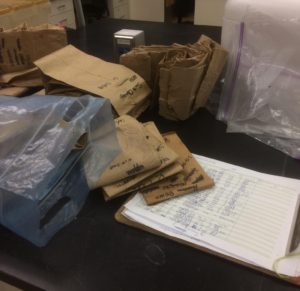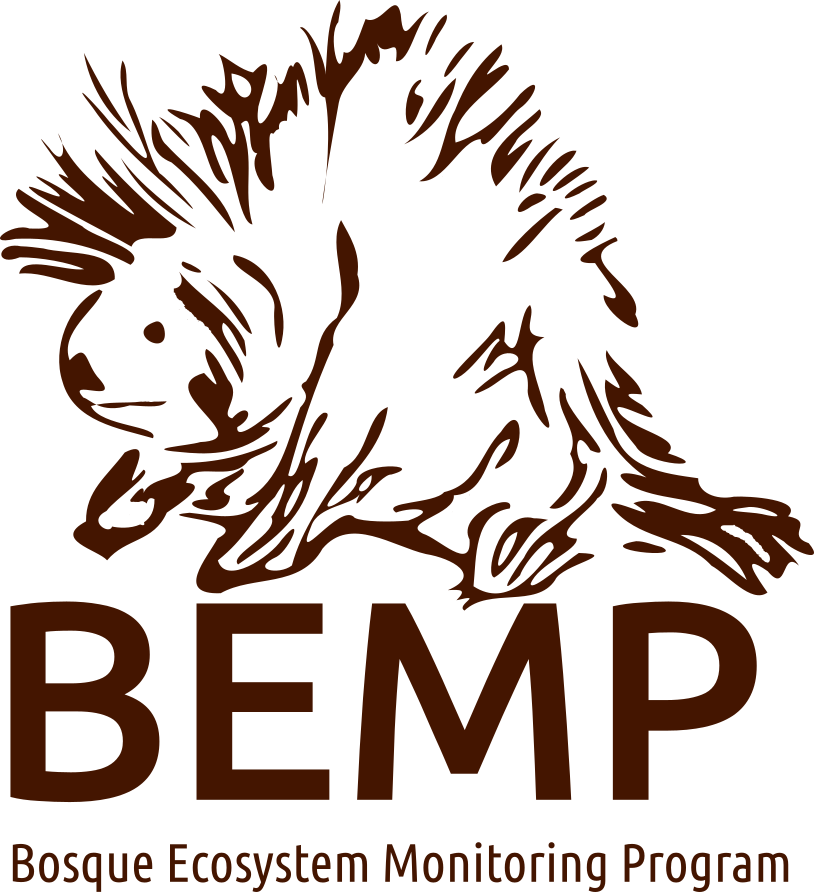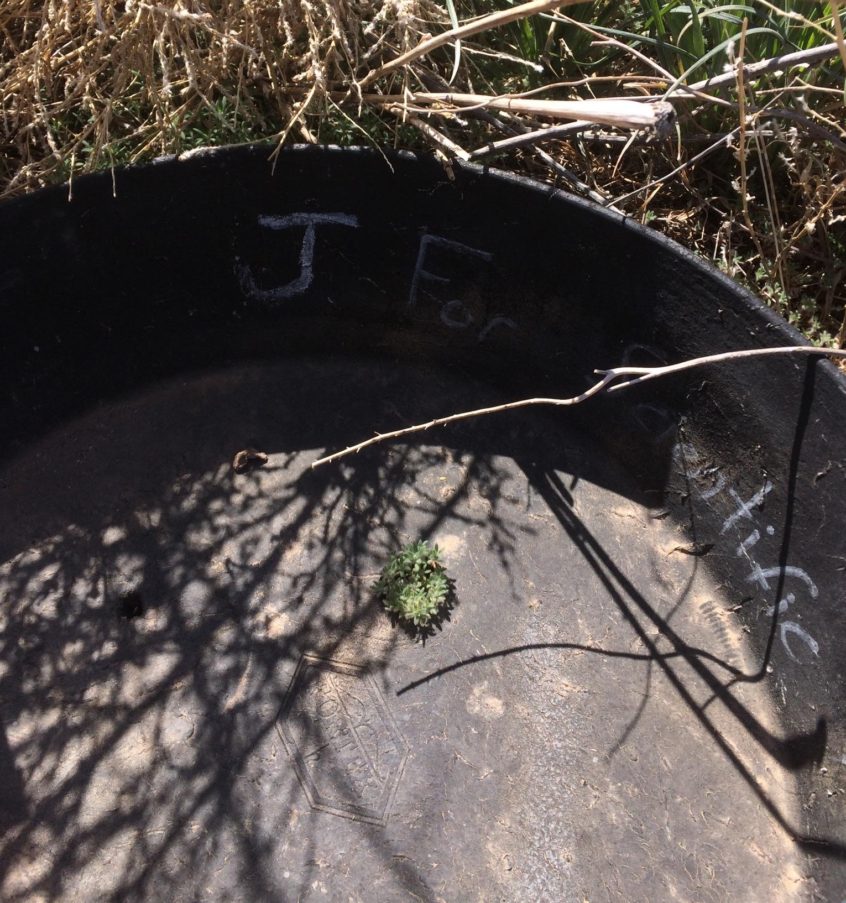What Happens to BEMP data?
Every third full week of the month, BEMP staff and students head out along the Middle Rio Grande to one of 33 research sites to collect data on groundwater, precipitation, and litterfall. These monthly collections help build our thousands of data points that tell us about the overall health of the bosque and help inform others who are invested in the bosque’s past, present, and future.

Litterfall tub in the field

Paper bags full of litterfall from 33 sites
But, have you ever thought about how those monthly collections turn into data points? Especially physical data like litterfall?
Litterfall is one of the methods we can use to identify trends in phenology, net primary production, exotic vs. native plant composition, and nutrient cycling in an ecosystem. Litterfall can vary from leaves, wood, and plant reproductive parts. Essentially, litterfall is any plant material that is “littered” onto the ground. At each site, there are ten different litterfall tubs. BEMP collects the contents of each tub in a brown paper bag, making a total of 330 each month and a grand total of (almost) 3840 a year! But what happens to all those bags once they are collected?
Once litterfall is collected, it has to be inventoried. BEMP staff takes the time to check if all ten bags from each site are present, if there is a date recorded, and if there’s any larger plant material outside of the paper bags. Once that happens, litterfall is “cooked” for 48 hours in a drying oven. This is so that any moisture in the vegetation evaporates, allowing BEMP to get a true weight of the litterfall. Next, the leaves must be processed and sorted. BEMP staff, undergraduate interns, or any of our wonderful student citizen scientists sort the leaves by species and reproductive parts. Sometimes, this is not an easy task; have you ever sorted through cottonwood “fluff,” or experienced peak allergy season indoors in November? Not to mention the discipline it takes to identify sixteen different kinds of native and exotic plant species, wood, and reproductive parts. Sometimes, this process can take hours. Once we sort all the species, we weigh them out and record.

Drying ovens in UNM BEMP lab

Processing litterfall
There are so many steps involved in BEMP’s monthly monitoring data, from collections, to drying, to processing, to analyzing– we thank each and every one of you who have picked up some forceps, cleared out a litterfall tub, joined us in monthly monitoring, and assisted us with our data collection.
So the next time you beep a well or put leaves in the bag, know that it’s not the end of its journey. It’s just the start in creating a single data point for the thousands that we collect, sort, process, and analyze every day to learn more about our wonderful bosque!
Blog post by Keara Bixby, BEMP Biologist and Lab Manager

